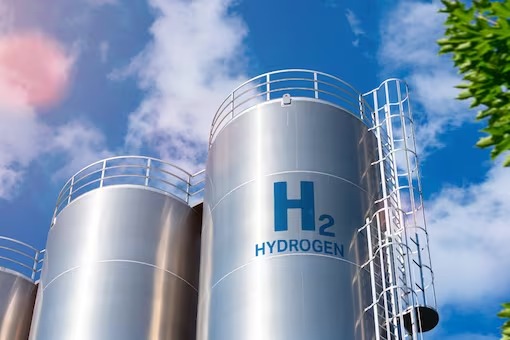According to UPNEDA Chief, UP’s Green Hydrogen Policy 2023 Will Help Achieve a 1 Million Tonne Production Capacity and Create 1,20,000 Jobs
With a target of producing one million tons of green hydrogen annually (mtpa), Uttar Pradesh is poised to become a leader in the green hydrogen industry.

Anupam Shukla, Director of the Uttar Pradesh New and Renewable Energy Development Agency (UPNEDA), said in an interview with News18 that the state is prepared with its Green Hydrogen Policy 2023, which will be essential to reaching a 1 mtpa capacity for the generation of green hydrogen. The nodal agency for implementing the bioenergy policy, solar energy policy, and other renewable energy initiatives is UPNEDA.
Revised passages:
What is green hydrogen, and how can the creation of it help the economy of Uttar Pradesh?
The main goals of green hydrogen are to mitigate global warming, lessen reliance on fossil fuels by substituting gray hydrogen, and provide a wider range of end applications in certain industries. By electrolyzing water with renewable energy or stored renewable energy, green hydrogen is created. Green hydrogen also includes biomass-based hydrogen, which is created by the pyrolysis of biogas or other biomass products.
We have created a draft Uttar Pradesh Green Hydrogen Policy 2023, which is anticipated to get approval from the government shortly, to encourage the production of green hydrogen and this industry in the state. Our objective is to create 120,000 employment and have a manufacturing capacity of one million tons of green hydrogen annually (mtpa).
In this context, we will also create two centers of excellence devoted to green hydrogen innovation and research. The Uttar Pradesh government got investment bids totaling Rs 2.73 trillion for green hydrogen plants from 20 top corporations during the Global Investor Summit (GIS) in 2023. Of these, five developer firms are now working to assure the realization of nine projects with a combined capacity of around 12,000 MW.
On February 19, the much anticipated groundbreaking ceremony is scheduled to take place. What can we anticipate from it in terms of the industry for renewable energy?
The show is set to go on. UPNEDA received a total of Rs 7.5 lakh crore in investment proposals for the renewable energy industry during the Global Investor Summit (GIS) 2023. Of these, 111 projects are ready, including five pumped storage projects, 74 bioenergy projects valued at Rs 5,000 crore, and 32 solar energy projects valued at Rs 45000 crore.
In the last several months, the UP government has allotted more than 6,000 acres of land for the project’s execution.
17 cities, including holy places like Ayodhya and Varanasi, are to be converted into solar cities by the government. What steps are being done to make this massive transition possible?
Under the Solar City Programme of the Uttar Pradesh government, Ayodhya is the first city to be created as a model solar city. Solar roofs, solar high masts, solar street lights, solar trees, solar cold storage, solar boats, solar parks, and solar water are all part of the program. Kiosk construction and solar pump station energization are also included.
To aid in the transition, the government has also approved an additional sum of Rs 28.2 crore. In Ayodhya, more than 2,500 solar lights have been erected on around 40 junctions in addition to other facilities like ATMs and solar trees.
Similar attempts are being done in Varanasi as well, where government buildings are to have rooftop solar plants installed. These activities are not limited to Ayodhya. The proposal called for installing over 25,000 rooftop solar panels on the rooftops of government buildings.
In order to boost the uptake of rooftop solar, UPNEDA is also arranging programmes to encourage particular communication in areas such as Kanpur, Varanasi, Aligarh, and others. This year, we want to train three thousand Surya Mitras.
Additional efforts have resulted in the establishment of training facilities in different places (Chinhat, Lucknow, Ghosi, Mau, Siyarmau, Kannauj, and in collaboration with other ITI colleges) to provide broader accessibility to skill development initiatives under the Surya Mitra Yojana. Out of the 1,900 young people who have received training so far, 90 have started their own businesses and 65 have been successful in finding jobs.
How many bioenergy and solar projects are currently under development in the Uttar Pradesh?
Several significant projects are scheduled to begin in the next two years, including 600 MW of solar parks in Jhansi, Uttar Pradesh; 600 MW in Lalitpur; and 800 MW in Chitrakoot. In Jhansi, 90% of the land acquisition process has been finished; in Lalitpur, 75%; and in Chitrakoot, 60%. Tusco Limited will carry out these projects, which have a budget of about Rs 4,000–5,000 crore.
THDC, NHPC, and SECI are just a few of the central PSUs with whom UPNEDA has worked to construct utility-scale solar projects.
In addition, BSUL will carry out the 1200 MW Solar Park in Jalaun, Uttar Pradesh; the 65 MW Kalpi Solar Power Project; the 45 MW Madhogarh Solar Power Project; and the 100 MW Mirzapur Solar Power Project. The 40 MW Jalaun Solar Park in Dakor, the 75 MW Jalaun Solar Park in Guna, the 75 MW Jalaun Solar Park in Parasan, and the 50 MW Kanpur Dehat Solar Park in Gujarai are all being implemented by LSPDCL.
Additionally, the 75 MW Prayagraj Solar Park and the Mirzapur Solar Park have already been developed by LSPDCL. Additionally, the government is pushing bioenergy initiatives and hopes to establish one or more in each state tehsil. Plans totaling Rs 2,960 crore for 80 bioenergy projects have received permission from the government.
How might Uttar Pradesh’s economy grow to be worth $1 trillion with the aid of the renewable energy sector?
Using 2100 MW of solar energy and 2200 MW of biofuel, the state’s renewable energy capacity has grown to 4300 MW during the last seven years. The government has developed the UP Solar Energy Policy 2022 and the Bioenergy Policy 2022 in an effort to further maximize the capacity.
Through the energy transition, the government is dedicated to the state’s sustainable development. UPNEDA, the state’s nodal agency for renewable energy projects, is encouraging the usage of a variety of renewable energy sources in an effort to meet the target of building a $1 trillion economy. Approximately 302 megawatt solar rooftop plants have been set up in the state so far.
A total of 1,527 buildings belonging to additional social, educational, government, semi-government, industrial, and commercial organizations had solar rooftop plants installed. Additionally, in order to further encourage the usage of solar roofs, UPNEDA has started a number of awareness campaigns to educate the public about the advantages of solar energy in districts including Ayodhya, Ghaziabad, Varanasi, Kanpur, and Aligarh, among others.







